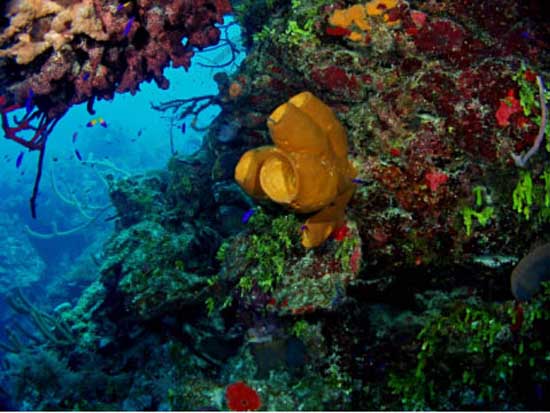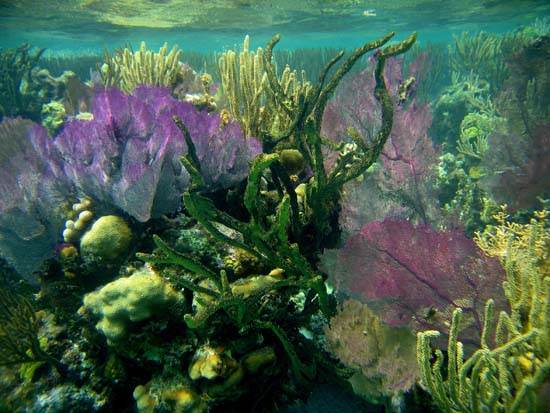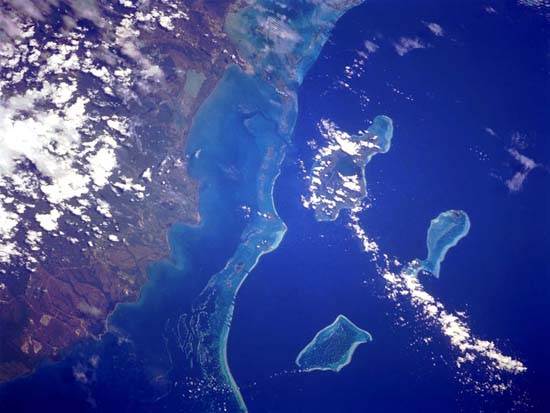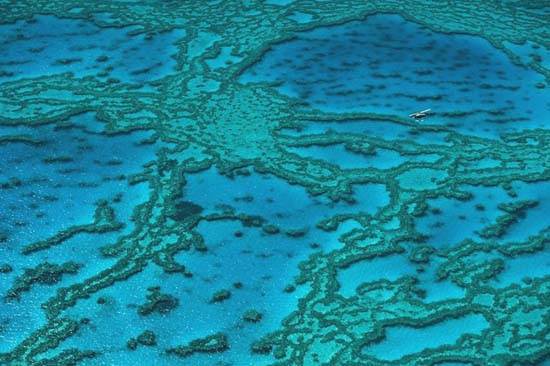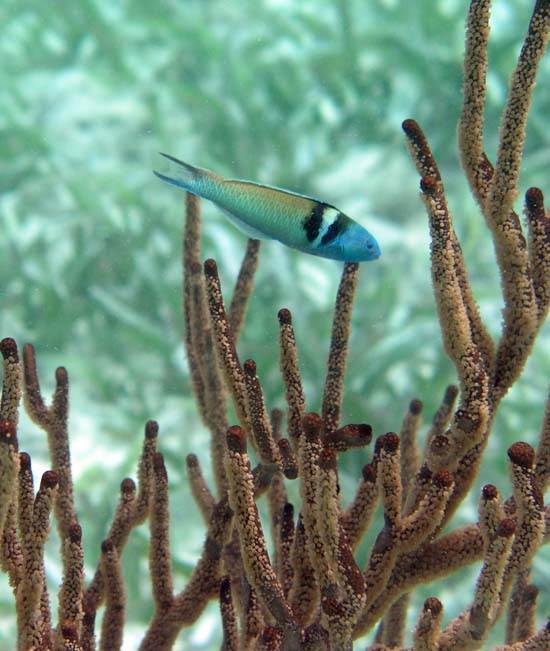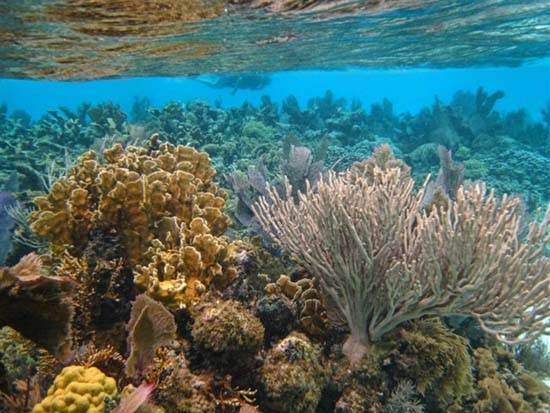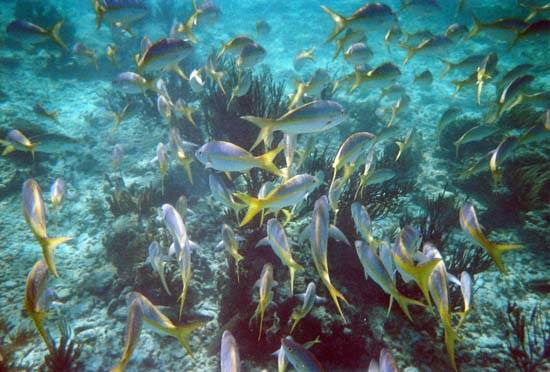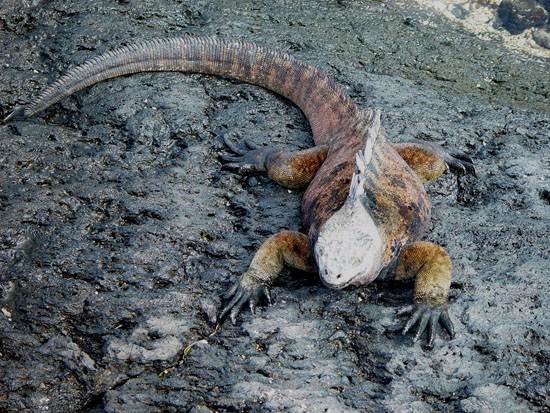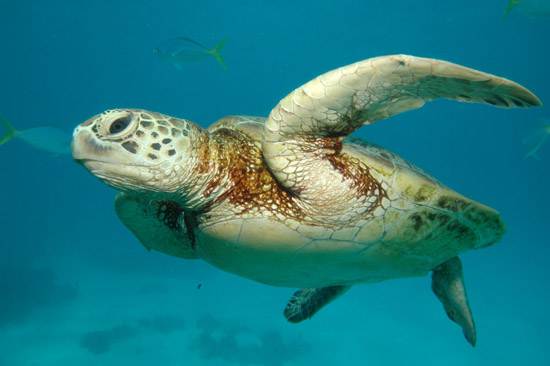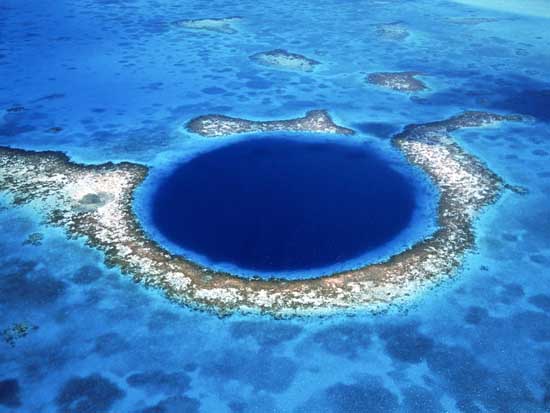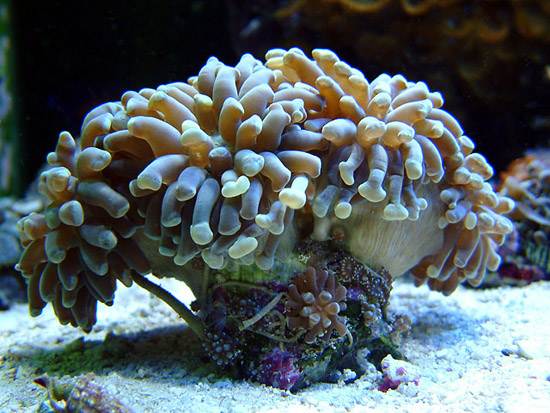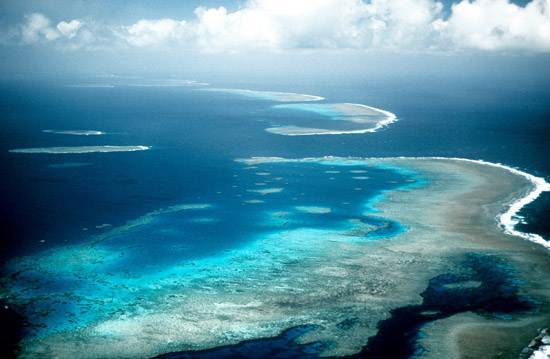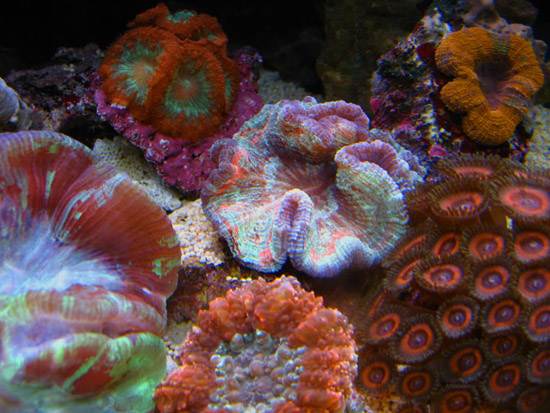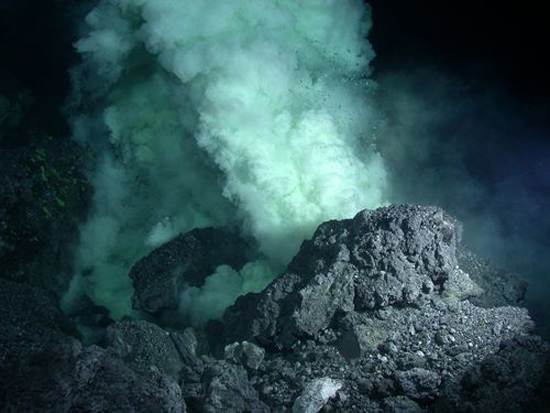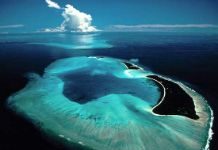The coastal area of Belize is an outstanding natural system consisting of a series of an unbroken chain of coral reefs straddling the coast of Belize, Nearly 260 km long, it runs from the northern border of the country, where it is only about 1 km offshore, south to the Sapodilla Cayes which lie some 40 km offshore. Belize also has one of the most diverse reef ecosystems in the world, and one of the Seven Wonders of the Underwater World.
Was described in 1842 by Charles Darwin as “the most remarkable reef in the West Indies”. It is the longest barrier reef in the Western Hemisphere and the second largest, after Australia’s Great Barrier Reef, in the world. The reef wall is formed by numerous colonies of living, breathing invertebrates, coral polyps. The reef is home and host to a large diversity of plants and animals, hundreds of species of fish (500 species ), shellfish, 70 hard coral species,36 soft coral species , anemones, lobster, octopus, and other sea creatures, making it one of the most diverse ecosystems of the world.
More than 90 percent of the reef still needing to be researched, it is estimated that only 10 percent of all species have been discovered. The sea is predominantly shallow at the northern part of the reef harbor and Belize City, forming a flat shelf where sea grass grows ,making home to barnacles, conches, crabs and other shellfish, anemones, seahorses, sponges, and starfish. From outer space there is the unique phenomena of the Blue Hole which is visible. Coral can be sensitive to any environmental changes. In recent years, the reef is under threat from changes in nutrients, temperature, oceanic pollution, uncontrolled tourism, shipping, and fishing. Concern has grown that climate change have become a serious and compounding threats to the reef. It is claimed that over 40 percent of Belize’s coral reef has been damaged since 1998. Its unique beauty and complexity is truly a wonder of the world.

